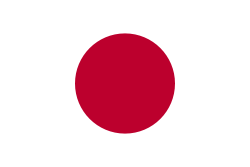National Naadam Festival Alongside the Danshig Naadam, the biggest festival is the National Naadam Festival, which is held in the Mongolian capital, Ulaanbaatar, during the National Holiday from July 11 to 13, in the National Sports Stadium. It begins with an elaborate introduction ceremony featuring dancers, athletes, horse riders, and musicians. After the ceremony, the competitions begin. The competitions are mainly horseback riding
Naadam (literally "games") is a traditional festival celebrated in Mongolia, Inner Mongolia and Tuva Republic. The festival is also locally termed "eriin gurvan naadam", "the three games of men". The games are Mongolian wrestling, horse racing, and archery, and are held throughout the country during midsummer. Women have started participating in the archery and girls in the horse-racing games, but not in Mongolian wrestling. In 2010, Naadam was inscribed on the Representative List of the Intangible Cultural Heritage of Humanity of UNESCO.

WRESTLING
Wrestling Wrestling in the 2005 Naadam festival Main article: Mongolian wrestling A total of 512 or 1024 wrestlers meet in a single-elimination tournament that lasts nine or ten rounds. Mongolian traditional wrestling is an untimed competition in which wrestlers lose if they touch the ground with any part of their body other than their feet or hands. When picking pairs, the wrestler with the greatest fame has the privilege to choose his opponent. Wrestlers wear two-piece costumes consisting of a tight shoulder vest (zodog) and shorts (shuudag). Only men are allowed to participate. Each wrestler has an "encourager" called a zasuul. The zasuul sings a song of praise for the winning wrestler after rounds 3, 5, and 7. Winners of the 7th or 8th stage (depending on whether the competition features 512 or 1024 wrestlers) earn the title of zaan, "elephant". The winner of the 9th or 10th stage is called arslan, "lion”. In the final competition, all the "zasuuls" drop in the wake of each wrestler as they take steps toward each other. Two-time arslans are called the titans / giants, or avraga.
HORSE RACING


ARCHERY
A women's archery competition held during the 2005 Naadam festival In this competition both men and women may participate. It is played by teams of ten. Each archer is given four arrows; the team must hit 33 "surs". Men shoot their arrows from 75 meters away while women shoot theirs from 65 meters away. Traditionally the archers wear their national clothing (Deel) during the competition. All the archers wear leather bracers up to the elbow on their outstretched arm, so that the deel’s cuff does not interfere with shooting. Mongolian archery is unique for having dozens of surs as targets. Each sur is a small woven or wooden cylinder. They are placed on top of each other forming a wall three-high, which is approximately 8 inches high by 5 feet wide. Knocking a sur out of the wall with an arrow counts as a hit, though knocking a sur out of the centre will bring a competitor more points. When the archer hits the target, the judge says uuhai which means "hooray". After each hit, an official repairs the damaged wall and makes it ready for the next attempt. The winners of the contest are granted the titles of "national marksman" and "national markswoman.







